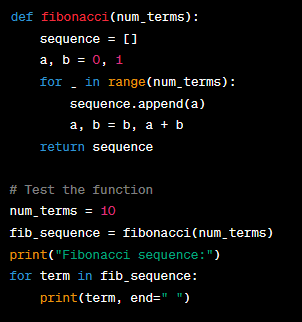Python Functions: An Introduction to Modular and Reusable Code Structures
Python functions are blocks of reusable code that perform specific tasks. They allow for modular programming by breaking down code into smaller, self-contained units. Functions can accept input parameters and return output values, enabling flexible and customizable behavior. They promote code organization, readability, and reusability. By encapsulating functionality within functions, developers can easily manage and maintain their codebase. Functions can be defined with the 'def' keyword, followed by the function name and optional parameters. The function body consists of the code block to be executed, and the 'return' statement can be used to send a value back to the caller.
how to create a Python function
- Use the def keyword followed by the function name and parentheses.
- Define any input parameters inside the parentheses.
- Write the code block for the function, indented below the function definition.
- Optionally, use the return keyword to specify the value the function should return.
- Call the function by using its name followed by parentheses, providing any required arguments.
def add_numbers(num1, num2):
return num1 + num2
result = add_numbers(3, 5)
print(result)
types of functions in python
In Python, there are several types of functions that you can use:- Built-in Functions: These functions are built into the Python language and are always available for use. Examples include 'print()', 'len()', 'range()', and 'input()'.
- User-defined Functions: These functions are created by users to perform specific tasks. You can define your own functions using the 'def' keyword. For example:
3. Lambda Functions (Anonymous Functions): Lambda functions are small, anonymous functions that can be defined using the lambda keyword. They are typically used when you need a simple, one-line function. For example:
add = lambda x, y: x + y
def factorial(n):
if n == 0:
return 1
else:
return n * factorial(n-1)
5. Higher-Order Functions: Higher-order functions are functions that can take other functions as arguments or return functions as results. They allow you to write more flexible and reusable code. Examples include 'map()', 'filter()', and 'reduce()'.List of some commonly used functions in Python:
library functions in Python:
print(): Used to display text or variables on the console.input(): Reads input from the user through the console.len(): Returns the length (number of items) of an object like a string, list, or tuple.type(): Returns the type of an object.range(): Generates a sequence of numbers within a specified range.max(): Returns the maximum value from a sequence of numbers or the maximum item from an iterable.min(): Returns the minimum value from a sequence of numbers or the minimum item from an iterable.sum(): Returns the sum of all the elements in a sequence of numbers.abs(): Returns the absolute value of a number.round(): Rounds a number to a specified number of decimal places.
string functions in Python:
- len(): Returns the length of a string.
- upper(): Converts all characters in a string to uppercase.
- lower(): Converts all characters in a string to lowercase.
- capitalize(): Converts the first character of a string to uppercase and the rest to lowercase.
- title(): Converts the first character of each word in a string to uppercase and the rest to lowercase.
- count(): Returns the number of occurrences of a substring in a string.
- find(): Returns the lowest index of a substring in a string (-1 if not found).
- replace(): Returns a string where all occurrences of a substring are replaced with another substring.
- split(): Splits a string into a list of substrings based on a delimiter.
- join(): Joins the elements of a list into a single string using a specified separator.
number functions in Python:
- abs(): Returns the absolute value of a number.
- round(): Rounds a number to the nearest integer or to a specified number of decimal places.
- int(): Converts a number or a string containing a number to an integer.
- float(): Converts a number or a string containing a number to a float.
- max(): Returns the largest number from a sequence of numbers or the maximum of two or more numbers.
- min(): Returns the smallest number from a sequence of numbers or the minimum of two or more numbers.
- sum(): Returns the sum of all numbers in a sequence.
- pow(): Returns the result of raising a number to a specified power.
- divmod(): Returns the quotient and remainder of dividing two numbers.
Python function programs for practice:
1.Program to check if a number is prime:



%20of%20two%20numbers%20using%20Euclidean%20algorithm.PNG)
No comments:
Post a Comment